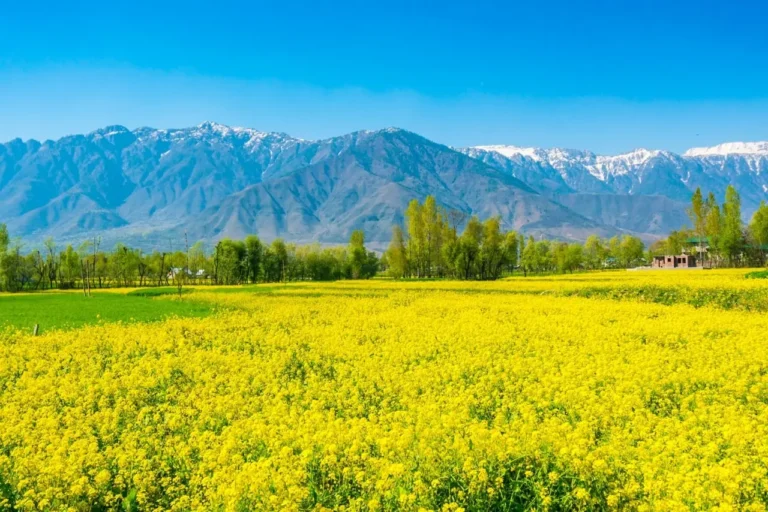Jammu and Kashmir is a beautiful state (now UT) located in northern India, with a diverse geography and culture.
The state is divided into three regions – Jammu, Kashmir, and Ladakh, each with its own unique characteristics.
In this article, we will explore the geography of Jammu and Kashmir, focusing on the weather, climate, crops, and soils.
Also Read: Transportation in J&K
Geography of J&K
Weather
Jammu and Kashmir experience a wide range of weather conditions, depending on the region and altitude.
1. The Jammu region, which lies in the foothills of the Himalayas, has a subtropical climate, with hot summers and mild winters.
- Average rainfall – 1130 mm per year
- Temperature – up to 45°C
2. The Kashmir Valley, which is at a higher altitude, experiences a temperate climate, with cool summers and cold winters.
- Average snowfall – 400-700 cm per year
- Average rainfall – 600 mm per year
3. The Ladakh region, which is a high-altitude desert, has a cold and arid climate, with temperatures dropping well below freezing during the winter months.
- Average rainfall – 100 mm per year
Climate
Jammu and Kashmir has diverse climate, with the different regions experiencing different weather patterns.
1. The Jammu region has a humid subtropical climate, with average temperatures ranging from 15°C in winter to 35°C in summer.
The Jammu region experiences a monsoon season from July to September, which brings most of the region’s rainfall.
2. The Kashmir Valley has a milder climate, with average temperatures ranging from 0°C in winter to 30°C in summer.
The Kashmir Valley experiences a pleasant spring from March to May, with temperatures ranging from 13-23°C.
3. The Ladakh region has a cold and arid climate, with temperatures ranging from -20°C in winter to 25°C in summer.
Ladakh experiences very low levels of humidity, with an average annual rainfall of only 10 cm.
Crops
Jammu and Kashmir has a diverse range of crops, thanks to its varied geography and climate.
1. The Jammu region is known for its rice, wheat, maize, and pulses.
This region is known for its Basmati rice, which is highly valued for its fragrance and taste.
2. The Kashmir Valley is famous for its saffron, apples, cherries, and walnuts.
The Kashmir Valley produces around 70% of India’s saffron, which is highly prized for its quality.
The Ladakh region, due to its extreme weather conditions, has limited agricultural production, but crops such as barley, wheat, and peas are grown in some areas.
Ladakh is known for its apricots, which are dried and exported to other parts of India.
Soils
Jammu and Kashmir has a variety of soils, depending on the region and altitude.
1. The Jammu region has alluvial soil, which is fertile and suitable for agriculture.
2. The Kashmir Valley has loamy soil, which is also fertile and well-suited for agriculture.
3. The Ladakh region, on the other hand, has rocky and sandy soil, which is not very conducive to agriculture.
Summary
Overall, Jammu and Kashmir’s geography and climate contribute to the production of a wide variety of crops, including fruits, grains, and spices.
The state’s weather, climate, crops, and soils all contribute to its rich cultural and agricultural heritage.
Must Read: Flora and Fauna J&K
FAQ’s
-
1. What is the climate like in the Kashmir Valley during summer?
The climate in the Kashmir Valley during summer is generally mild and pleasant, with temperatures ranging from 13-23°C.
-
2. What are the main crops grown in the Jammu region?
The main crops grown in the Jammu region are Basmati rice, maize, wheat, and fruits such as apples, oranges, and mangoes.
-
3. How does the climate in Ladakh affect crop production?
The climate in Ladakh is extremely arid and cold, which makes it difficult to grow crops.
However, the region is known for its apricots, which are well-suited to the local climate. -
4. What is the impact of heavy snowfall on crop production in the Kashmir Valley?
Heavy snowfall in the Kashmir Valley can damage crops and disrupt transportation, making it difficult to transport goods to market.




